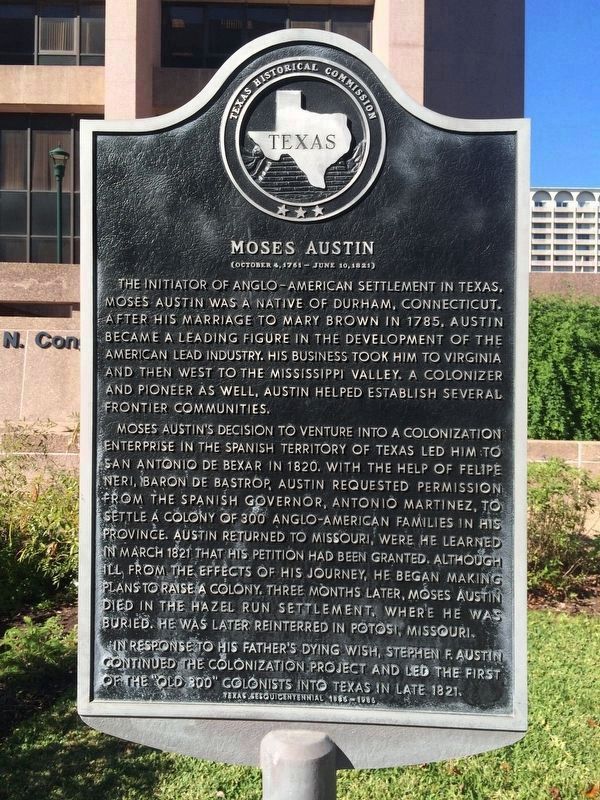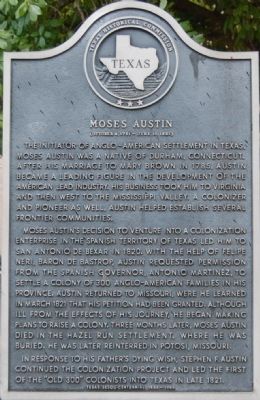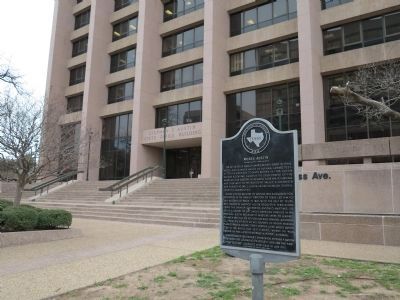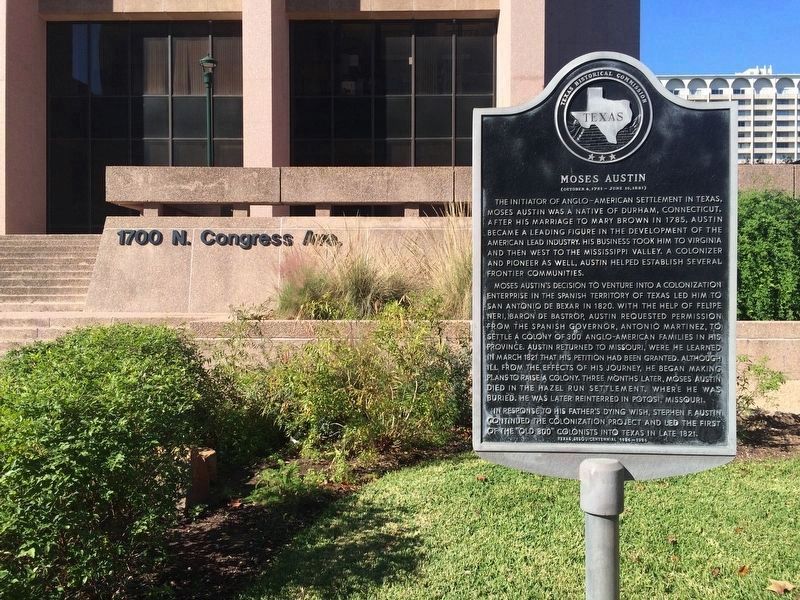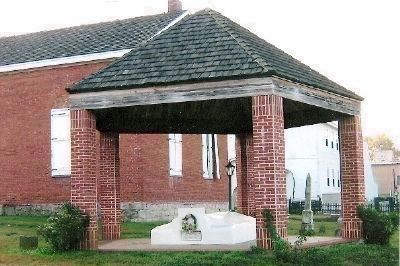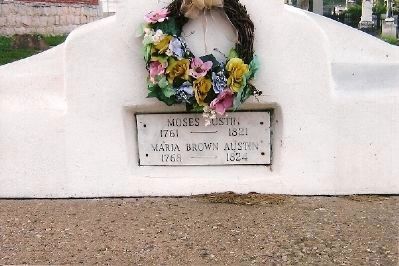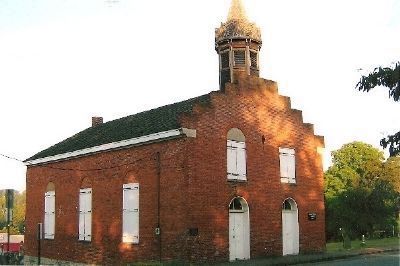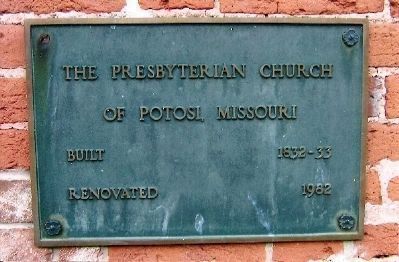Downtown Austin in Travis County, Texas — The American South (West South Central)
Moses Austin
(October 4, 1761 - June 10, 1821)
Inscription.
The initiator of Anglo-American settlement in Texas. Moses Austin was a native of Durham, Connecticut. After his marriage to Mary Brown in 1785, Austin became a leading figure in the development of the American lead industry. His business took him to Virginia and then west to the Mississippi Valley. A colonizer and pioneer as well, Austin helped establish several frontier communities.
Moses Austinís decision to venture into a colonization enterprise in the Spanish territory of Texas led him to San Antonio de Bexar in 1820. With the help of Felipe Neri, Baron de Bastrop, Austin requested permission from the Spanish Governor, Antonio Martinez, to settle a colony of 300 Anglo-American families in his province. Austin returned to Missouri, where he learned in March 1821 that his petition had been granted. Although ill from the effects of his journey, he began making plans to raise a colony. Three months later, Moses Austin died in the Hazel Run settlement, where he was buried. He was later reinterred in Potosi, Missouri.
In response to his fatherís dying wish, Stephen F. Austin continued the colonization project and led the first of the “Old 300” colonists into Texas in late 1821.
Texas Sesquicentennial 1836 - 1986
Erected 1986 by Texas Historical Commission. (Marker Number 16141.)
Topics. This historical marker is listed in these topic lists: Cemeteries & Burial Sites • Settlements & Settlers. A significant historical month for this entry is March 1821.
Location. 30° 16.76′ N, 97° 44.324′ W. Marker is in Austin, Texas, in Travis County. It is in Downtown Austin. Marker is on Congress Avenue just south of East 18th Street. Touch for map. Marker is at or near this postal address: 1700 N Congress Avenue, Austin TX 78701, United States of America. Touch for directions.
Other nearby markers. At least 8 other markers are within walking distance of this marker. Diocese of Austin (about 500 feet away, measured in a direct line); Site of Swedish Evangelical Free Church (about 500 feet away); Scottish Rite Temple (about 600 feet away); Gethsemane Church (about 600 feet away); Carrington-Covert House (about 700 feet away); Scholz Garten (approx. 0.2 miles away); State Bar of Texas (approx. 0.2 miles away); Texas World War I Memorial (approx. ľ mile away). Touch for a list and map of all markers in Austin.
Additional commentary.
1. Moses Austin and Potosi, Missouri
Moses Austin came to Missouri in 1797 after receiving a 3 square mile Spanish Land Grant, which included a lead mine, called "Mine a Breton"; opened about 1773 by Francois Azor. Moses was granted by the Spanish Governor the right to colonize, and he brought Missouri's first settlers. This friendship with the Spanish Governor was used as introduction to Tejas (Texas) Governor to request his colonization there.
Here, Moses sank the first mine shaft, he established "Potosi" and established it as the seat of Washington County. Moses also founded Herculaneum (Jefferson County) on the Mississippi river, as a lead depot and shipping point. His son, Stephen F. Austin, grew up in Washington County, was schooled here, developed his views on colonizing new lands, here.
Moses and his wife, Maria, are buried in Potosi's Presbyterian Cemetery. Moses died (1821) soon after the Spanish Governor of Texas granted his petition to settle 300 families there. His son Stephen, now called the "Father of Texas", took up his fathers mantel, creating the "Colony of 300".
— Submitted June 7, 2010, by James R. Kuntz of Warrenton, Missouri.
Credits. This page was last revised on February 1, 2023. It was originally submitted on January 23, 2010. This page has been viewed 1,662 times since then and 31 times this year. Last updated on October 29, 2020, by Richard Denney of Austin, Texas. Photos: 1. submitted on February 9, 2021, by Richard Denney of Austin, Texas. 2. submitted on January 23, 2010, by Keith Peterson of Cedar Park, Texas. 3. submitted on February 10, 2014, by Richard Denney of Austin, Texas. 4. submitted on February 9, 2021, by Richard Denney of Austin, Texas. 5, 6, 7, 8. submitted on June 7, 2010, by James R. Kuntz of Warrenton, Missouri. • J. Makali Bruton was the editor who published this page.
